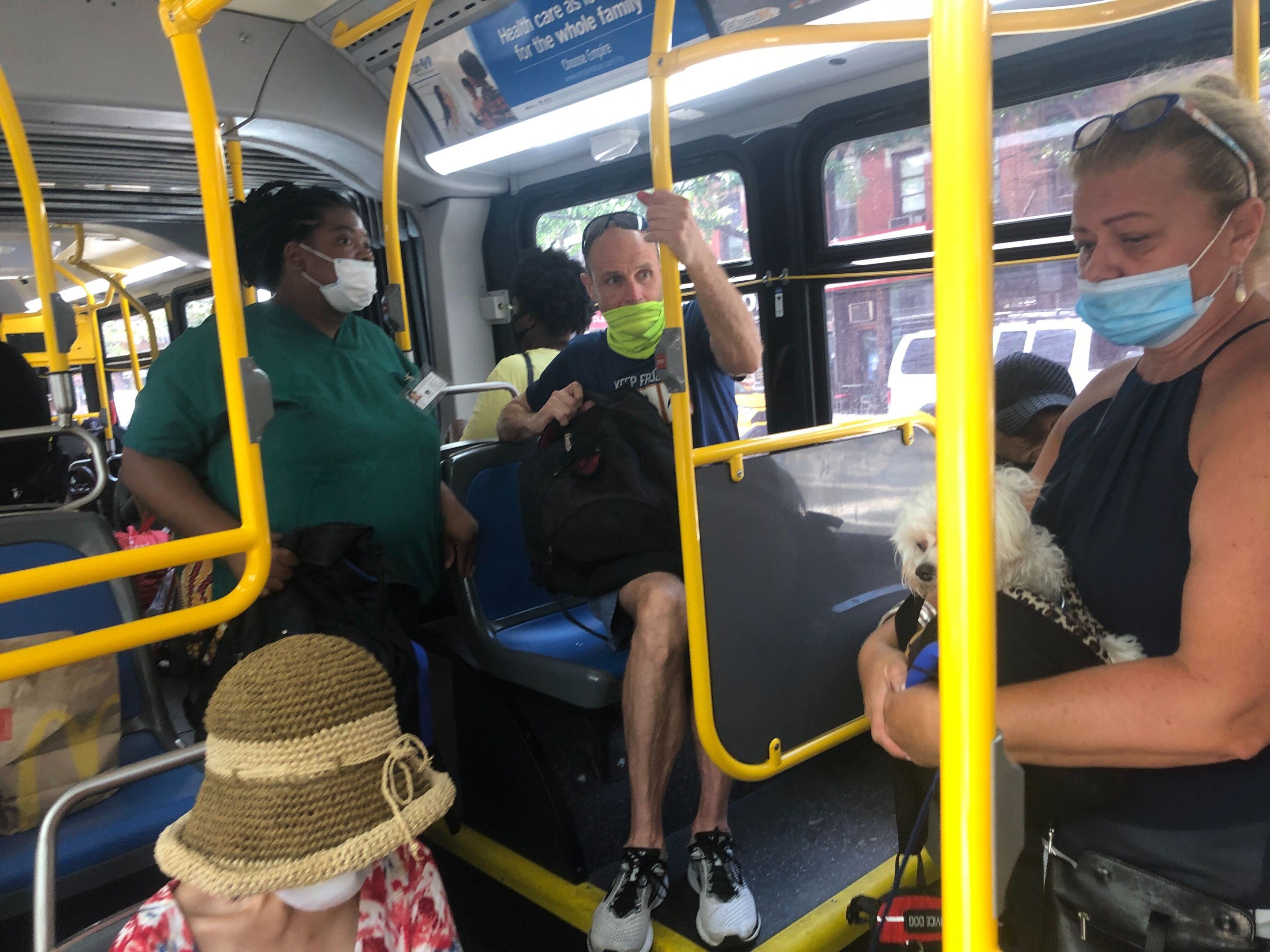As bus speeds drop with the return of pre-pandemic traffic, the Metropolitan Transportation Authority and the city Department of Transportation must honor their commitment and install transit signal priority across the city — stat!
This action would not only help restore the reliability of bus service, it also might help with coronavirus mitigation — in that the less time passengers spend crowded on a bus, even with mandatory masks, the better for all concerned.

Transit signal priority is what its name implies: At traffic lights, buses get the green light before cars do, so they can go first. And the technology lets traffic lights know when buses are approaching, so buses have more chances to get through green lights.
Slow speeds are the primary cause of New York City Transit’s decade-long decline in bus ridership, making service unreliable and frankly undesirable. Citywide average speeds dropped from a respectful 9.2 mph to 8.3 mph in August, according to the most recent data available; it's likely even slower since Aug. 31, when one-by-one fare collection through the front door resumed. Also, the DOT is punting on its promised busways on Main Street and Jamaica Avenue in Eastern Queens, Fifth Avenue in Manhattan, and Hylan Boulevard in Staten Island — which Mayor de Blasio called "urgent" in June. These projects will speed trips for riders on those routes, but they are mired in controversies.
With bus ridership building steadily after the pandemic’s trough, the city should activate TSP, which it can do systemwide because the traffic lights run on centralized, wireless technology.
The DOT already installed TSP at about 1,000 intersections on 21 of the busiest bus routes — and it was supposed to add another 300 intersections a year as part of the mayor’s Better Bus Initiative. In truth, it could roll it out even faster, but the department says it needs to do laborious traffic studies on each intersection to make sure individual car drivers aren't inconvenienced by a minute to give priority to buses packed with people.
Now, with the austerity budget necessitated by COVID, the DOT has yet another excuse for why TSP can’t happen quickly — the Better Bus initiative took a $5.7-million cut.
So for now, just flip the switch. If traffic is unduly affected, there's your side benefit: Driving will reduce as more and more car owners realize that the bus is actually better.
There’s no reason why New Yorkers should return to suffering some of the slowest buses in the country. As everyone knows, bus riders are the poorest New Yorkers, having lower average incomes than even subway riders, so spending money on the buses that get them to work, doctor appointments and school is one of the city’s signal anti-poverty programs. The Bus Turnaround Coalition has done a good job of identifying the problems and the solutions.
The MTA has spared no expense in sanitizing the trains and buses for rider safety. The cleanings have helped restore confidence in the systems and have made for more pleasant rides — even though the connection with coronavirus mitigation is dubious. But the city should focus its efforts where its numbers are: Bus ridership has rebounded faster than the subway ridership.
Speeding up buses might actually make for less disease, as shorter trip times with less time stopped in traffic could reduce the potential for people to spread the virus by getting them out of the (enclosed space that is the) buses sooner. Also, it is mostly impossible to maintain the requisite six feet of social distance on a bus.
The cost of TSP should be negligible now that installation is mostly complete and essentially requires the flick of a switch. New Yorkers have made many sacrifices as we've weathered the virus, and the city has undertaken many emergency measures. Why not this?
Mayor de Blasio: Stop holding bus riders hostage to your own red tape!
Samuel Santaella lives in southeast Queens and volunteers for Riders Alliance, Transportation Alternatives and the Bus Turnaround Coalition. Follow him on Twitter at @transitninja205.






